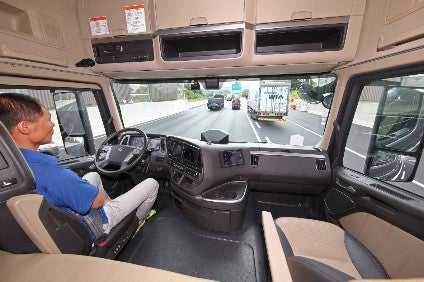
Hyundai Motor Company has completed South Korea’s first domestic highway journey with an autonomously navigated semi-trailer truck – appropriately covering a route used by group logistics specialist Glovis.
The Xcient truck drove approximately 40km (25 miles) on the highway between Uiwang and Incheon, carrying a large semi-trailer simulating cargo transportation.
The automaker said autonomous navigation of heavy duty trucks is a leading innovation that will transform the trade logistics industry and is also expected to reduce the number of large road accidents that occur on busy roads each year due to human error.
“This successful demonstration proves that innovative autonomous driving technology can be used to transform the industry,” said Maik Ziegler, head of commercial vehicle R&D strategy.
“At this stage, a human driver is still used to control the vehicle manually in certain situations, but I think we will achieve level 4 automation soon as we are constantly upgrading our technological capability.”
The demonstration truck had a maximum load capacity of 40 tons and was semi-equipped with a Society of Automotive Engineers (SAE) standard Level 3 autonomous driving system, enabling it to steer, accelerate or decelerate, and manoeuvre through traffic without human input. A human driver was aboard to take over manual control when required.

US Tariffs are shifting - will you react or anticipate?
Don’t let policy changes catch you off guard. Stay proactive with real-time data and expert analysis.
By GlobalDataThe vehicle was equipped with innovative technology features, which enabled it to maintain and change lanes during the natural flow of traffic, detect lane changes made by vehicles in front of it, navigate through tunnels, and perform a complete halt or accelerate according to road traffic.
For the demonstration the Ministry of Land, Infrastructure and Transport (MOLIT) issued a temporary autonomous driving licence for the first time to a heavy-duty truck. Hyundai Motor, in cooperation with Hyundai Glovis, used the opportunity to test the application of autonomous driving for use in logistics.
The test route is Hyundai Glovis’s parts transportation most frequently travelled section for vehicles heading to Incheon port. The truck successfully completed the journey, travelling the 40km in an hour, keeping to the expressway speed limit of 90km/h.
Hyundai Motor is planning to undertake further autonomous navigation technology tests in future in a variety of areas like Busan.
The semi-trailer truck is approximately 3.5 times longer, 1.4 times wider, and 9.2 times heavier (empty) than the average compact sedan and this requires an advanced and detailed autonomous navigation system. Additional sensors optimised for heavy-duty trucks included hitch angle and trailer rear radar sensors.
Ten different sensors were used, including three front and side-rear cameras, two frontal and rear radars, three Lidars in the front and sides, and a hitch angle sensor in the trailer coupler which computes the change in angle between the truck and trailer in real-time, allowing the truck to be safely stabilized upon sharp turns.
The data collected by each sensor collaborates with the HD map and sends information to the electronic control module for localisation. The module makes accurate decisions for each situation, controlling the speed, steering, and breaking accordingly.
A new steering control system (MAHS for Motor Assist Hydraulic Steering) developed by Hyundai Mobis was also implemented, providing a precise steering mechanism that controls the steering angle depending on the decision made by the electronic control unit. This minimises the effort required to steer the vehicle, reducing driver fatigue.
Autonomous trucks maximise efficiency by maintaining the most efficient speed and velocity, reducing fuel costs, which make up one third of long distance delivery costs, and thereby lowering the vehicles’ carbon footprint.
“Sang-Sok Suh, head of strategy & planning at Hyundai Glovis, said: “The company will be a leader in adopting future mobility technology like autonomous driving for the trade logistics industry.”
Hyundai is currently investing in truck platooning technology that will enable this process to continue with autonomous vehicles which it plans to complete by 2020s.
Korean National Police Agency traffic accident statistics show trucks are involved in 10.8% of accidents each year, second to private vehicles at 53%. Also, the potential threat of a severe accident is relatively higher when a truck is involved in a collision, with a fatality rate of 3.7% versus 1.9% non-truck involved accidents.



